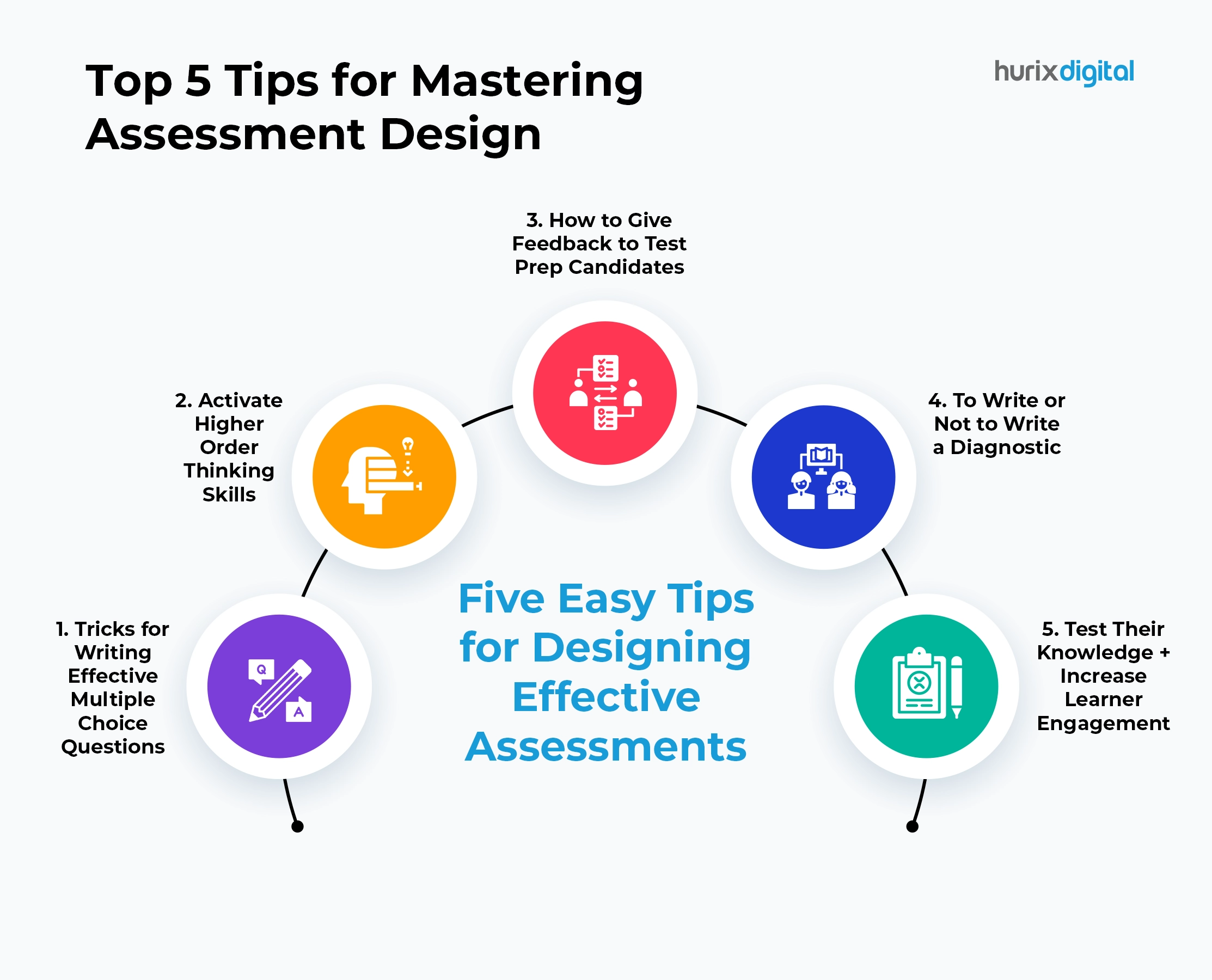Master assessment design with these top 5 tips. Learn to create effective assessments that measure learning outcomes accurately. From clear objectives to diverse question types, elevate your assessment strategy for optimal student engagement and performance.
Refine your assessment design with Hurix Digital. Optimize learning outcomes now!

Mastering Assessment Design
Creating effective assessments is crucial for evaluating learner outcomes and enhancing educational practices. Well-structured assessments foster engagement and promote higher-order thinking. Here are key strategies to enhance your assessment design.
Effective Question Writing
Crafting quality multiple-choice questions is fundamental. Focus on clarity and relevance to ensure questions accurately measure knowledge. Tips include:
- Avoid ambiguity: Ensure questions have one clear correct answer.
- Use plausible distractors: Include believable answer choices to challenge learners.
- Align with objectives: Questions should reflect the learning outcomes you aim to assess.
Encouraging Higher Order Thinking
Assessment design should promote critical thinking and problem-solving skills. Consider these approaches:
- Incorporate case studies: Use real-world scenarios to encourage analytical skills.
- Ask open-ended questions: Allow learners to express understanding and reasoning.
- Utilize project-based assessments: Assign projects requiring practical application of knowledge.
Feedback Mechanisms
Providing constructive feedback is vital. Feedback should be timely, specific, and actionable. Consider:
- Use rubrics: Clear grading criteria help learners understand performance and areas for improvement.
- Encourage self-assessment: Allow learners to reflect on their work, promoting ownership of their learning journey.
Diagnostic Assessments
Including diagnostic assessments can significantly influence learner readiness. These assessments identify strengths and weaknesses before instruction begins:
- Tailored instruction: Insights help instructors customize teaching strategies.
- Early intervention: Identifying gaps allows for targeted support.
Engagement Strategies
Engaging learners during assessments can improve retention. Enhance involvement by:
- Gamify assessments: Incorporate game elements to make assessments interactive.
- Use technology: Digital tools provide instant feedback and foster collaboration.
Conclusion
Efficient assessment design is integral to educational success. By focusing on effective question writing, promoting higher-order thinking, providing meaningful feedback, considering diagnostic assessments, and implementing engagement strategies, educators can enhance the assessment process, ensuring it enriches the learning experience.




